A few more photos were sent to us from Argentina today. Progress! We are eager to see the interior, which is a major time sink. Hull #42 is ahead of us on the wiring and other interior work, but we are ahead on the cosmetics on the outside.
- Two Fish on Right
- Rub rail and toe rail newly installed
- Bridle install
- Ports being installed
Here are some definitions of nautical terms used in the photo titles.
PORT
Port is left but a port left open is a window and any port works in a storm.
RAIL
Boats have rub rails and toe rails. A rub rail is a metal strip that runs across the side to prevent docking dings to the hull. Check it out on your car, you may have one running across the middle of the doors. Toe rails are at the edge of the deck and serve a few purposes. Firstly, they create a lip on the edge of the deck to prevent sailors from slipping off the boat. They also are a great place to attach blocks and other sailing bits.
BRIDLE
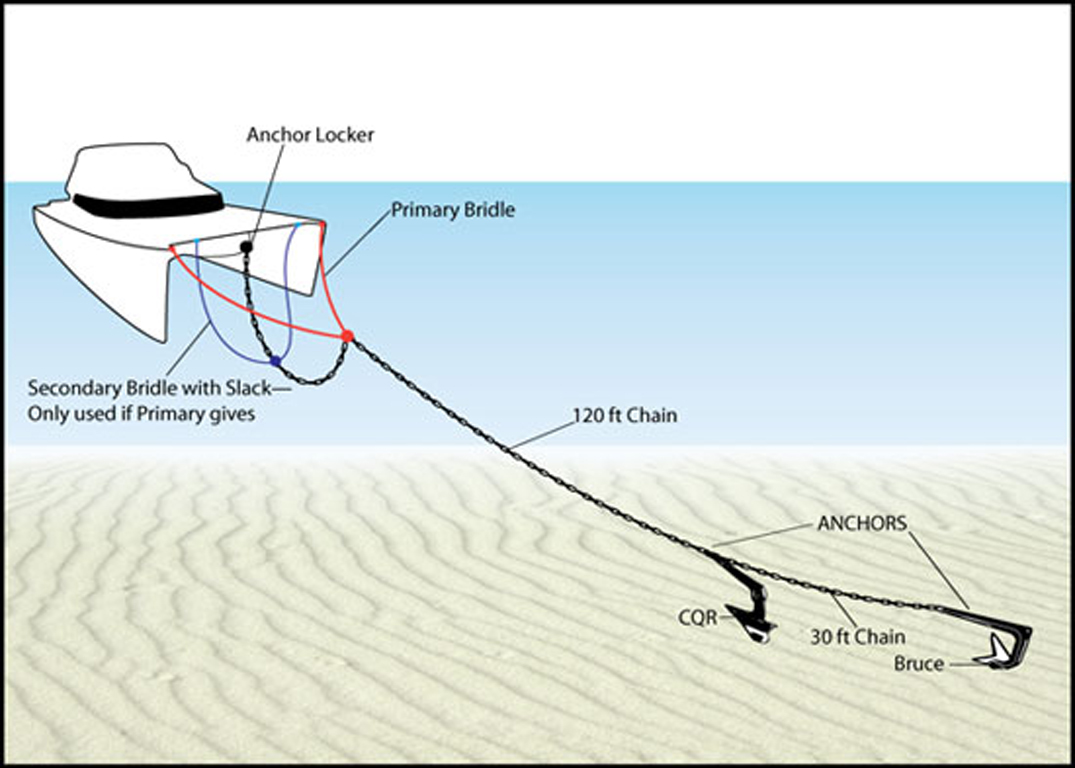 Anchors hold boats in place. There are entire books* written on the topic of anchors, but I will offer up the 4 sentence version (warning: this is copy-written content of the Two Fish Corporation). Anchors hold because: 1) the anchor sets (digs into the sea bottom), 2) the anchor chain (anchor rode) provides weight to hold the anchor in place, 3) the anchor rode is a shock absorber, and, 4) when the anchor is set, there is an angle from the anchor to the boat (scope). Scope is the ratio of anchor chain to the depth the boat is anchored in and reduces the strain on the set up. More scope means your boat will hold better but will also take up more space in the harbor. Many times sailors settle for 5 to 1. So in 20 feet of water they have 100 feet of anchor rode. Yikes, I am sailing and still having to do math! The anchor rode is attached to a windlass which is on deck. The windlass is a powered winch that helps raise the anchor. Did I mention that our anchor weighs 33 kilograms, not including the heavy chain? Catamaran owners have a trick when it comes to scope. Since the deck is 5 feet above the water, to achieve 5 to 1 scope in 20 feet of water one needs 125 feet of anchor rode (5 * (20+5)). The trick is that the bridle allows the anchor rode to be attached at the water line. No need for the extra 5 feet and now you only need 100 feet of anchor rode. And there is less chance of taking up the whole harbor and “making” friends in the middle of the night.
Anchors hold boats in place. There are entire books* written on the topic of anchors, but I will offer up the 4 sentence version (warning: this is copy-written content of the Two Fish Corporation). Anchors hold because: 1) the anchor sets (digs into the sea bottom), 2) the anchor chain (anchor rode) provides weight to hold the anchor in place, 3) the anchor rode is a shock absorber, and, 4) when the anchor is set, there is an angle from the anchor to the boat (scope). Scope is the ratio of anchor chain to the depth the boat is anchored in and reduces the strain on the set up. More scope means your boat will hold better but will also take up more space in the harbor. Many times sailors settle for 5 to 1. So in 20 feet of water they have 100 feet of anchor rode. Yikes, I am sailing and still having to do math! The anchor rode is attached to a windlass which is on deck. The windlass is a powered winch that helps raise the anchor. Did I mention that our anchor weighs 33 kilograms, not including the heavy chain? Catamaran owners have a trick when it comes to scope. Since the deck is 5 feet above the water, to achieve 5 to 1 scope in 20 feet of water one needs 125 feet of anchor rode (5 * (20+5)). The trick is that the bridle allows the anchor rode to be attached at the water line. No need for the extra 5 feet and now you only need 100 feet of anchor rode. And there is less chance of taking up the whole harbor and “making” friends in the middle of the night.
Enough sailing lessons. Enjoy the weekend.
* I read “The Complete Book Anchoring Handbook“.
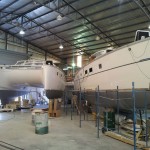
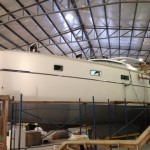
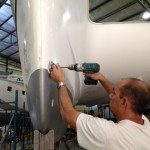

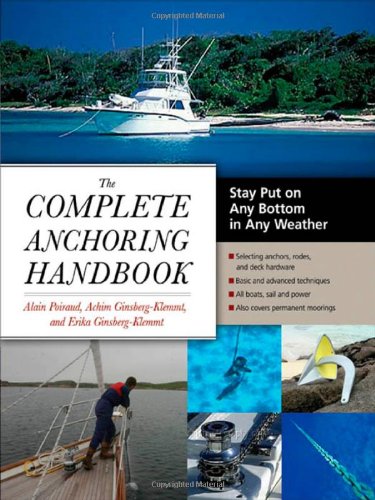
Comments are closed.